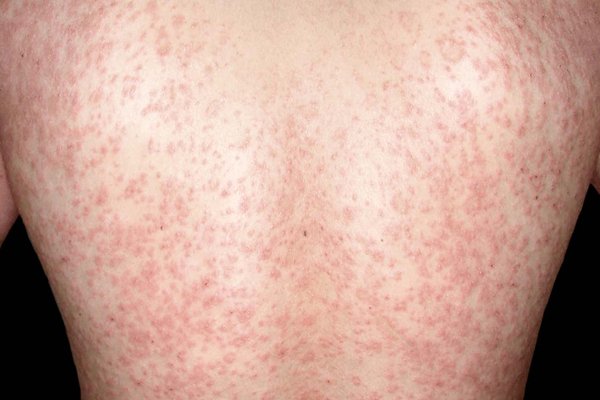
Understanding Pityriasis Rosea
Symptoms of Pityriasis Rosea
The symptoms of Pityriasis Rosea usually develop gradually. Early signs include a single oval patch—often on the chest, abdomen, or back—followed by a rash that may appear within a week or two. Common symptoms include:
A herald patch (the first and largest spot)
Multiple smaller scaly lesions appearing in a “Christmas tree” pattern on the back
Mild to moderate itching, which can worsen with heat or sweating
Fatigue, headache, or sore throat in some individuals before the rash appears
The rash usually lasts for 6 to 8 weeks, though in some cases, it may persist longer, especially in individuals with darker skin tones.
Causes and Triggers
Although the exact cause of Pityriasis Rosea remains unclear, dermatologists believe certain factors may contribute to its development:
Viral infection: Particularly human herpesvirus types 6 and 7
Seasonal factors: Commonly seen during spring and autumn
Stress or immune imbalance: May trigger flare-ups
Certain medications: Rarely, drug-induced Pityriasis Rosea can occur due to certain antibiotics, antihypertensives, or anti-inflammatory drugs
The condition is not allergic and not fungal, so antifungal creams or antibiotics are usually not needed unless there’s a secondary infection.
Diagnosis
Diagnosis is typically made through a detailed clinical skin examination by a qualified dermatologist. The doctor will carefully study the rash’s pattern, distribution, and appearance. In some cases, a skin scraping or biopsy may be performed to rule out other conditions that look similar, such as eczema, ringworm, psoriasis, or secondary syphilis.
At our skin and aesthetic clinic, advanced dermatoscopic evaluation and digital imaging help ensure precise diagnosis, allowing the dermatologist to tailor an effective treatment plan for faster relief and smoother recovery.
Treatment Options for Pityriasis Rosea
Since Pityriasis Rosea often resolves on its own within a few weeks, treatment primarily focuses on managing symptoms and soothing the skin. Our dermatology team provides comprehensive care plans that help minimize discomfort, control itching, and accelerate skin healing.
1. Topical Treatments
Moisturizing creams and lotions: Hydrating the skin helps reduce dryness and irritation.
Calamine lotion or soothing gels: Provide a cooling effect and calm itching.
Mild steroid creams: Prescribed in some cases to reduce inflammation and redness.
2. Oral Medications
Antihistamines: Help relieve itching and improve sleep quality.
Antiviral drugs: In severe or persistent cases, antiviral medication may be used if a viral trigger is suspected.
Anti-inflammatory tablets: Help reduce swelling and discomfort in more extensive rashes.
3. Light Therapy (Phototherapy)
Controlled UV light therapy is sometimes recommended for patients with widespread or long-lasting Pityriasis Rosea. It helps reduce redness and accelerates healing while improving skin tone and texture.
4. Home Care Guidance
Our dermatologists also emphasize simple yet effective self-care measures, such as:
Using mild, fragrance-free cleansers
Wearing loose, cotton-based clothing
Avoiding hot showers and harsh soaps
Keeping the skin well-moisturized
Staying hydrated and stress-free
These steps significantly improve comfort and prevent worsening of the rash.
Why Choose Our Clinic for Pityriasis Rosea Treatment
Our dermatology and aesthetic care center specializes in diagnosing and managing various skin conditions, including Pityriasis Rosea. With an evidence-based approach and personalized care, our goal is to ensure you achieve quick, comfortable, and complete recovery.
Expert Dermatologists
Our experienced dermatologists bring years of clinical expertise in managing skin rashes, infections, and pigmentation disorders. They focus on identifying the exact cause of your symptoms to avoid unnecessary treatments.
Advanced Diagnostic Tools
We use high-resolution skin imaging and dermatoscopy to accurately differentiate Pityriasis Rosea from other similar-looking conditions like eczema or psoriasis.
Customized Treatment Plans
Every patient receives a tailored treatment plan based on their skin type, severity of rash, and personal comfort level. Our dermatologists also guide you on skincare routines to restore your natural skin tone after recovery.
Holistic Skin Care
We combine medical dermatology with aesthetic skin treatments to support healing, prevent pigmentation, and maintain even skin texture.
Post-Treatment Care and Follow-Up
Even after the rash fades, mild discoloration may remain for a few weeks. Our post-treatment care includes:
Skin-lightening or brightening creams (if required)
Hydration-focused facials or chemical-free treatments
Regular dermatology follow-up to monitor progress
By following the dermatologist’s advice and maintaining proper skin hygiene, most patients recover fully without any scars or long-term effects.
When to Consult a Dermatologist
You should consult a dermatologist if:
The rash spreads rapidly or causes severe itching
Lesions persist for more than 8 weeks
You notice blisters, pus, or pain
You have dark patches or uneven pigmentation after recovery
Early diagnosis ensures faster relief and prevents unnecessary discomfort.
Healthy Skin Starts with Expert Care
While Pityriasis Rosea is self-limiting, proper medical evaluation is essential for accurate diagnosis and faster recovery. Our clinic’s dermatologists combine compassionate care with advanced treatment options to ensure your skin heals naturally, restoring its health and glow.
If you notice unusual patches, itching, or scaling, book an appointment today for a complete skin assessment and customized treatment plan.
